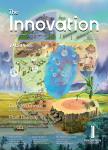Crowdsourcing intelligence for improving disaster forecasts
作者机构:College of Meteorology and OceanographyNational University of Defense TechnologyChangsha 410073China School of Atmospheric ScienceSun Yat-sen UniversityZhuhai 519082China College of Systems EngineeringNational University of Defense TechnologyChangsha 410073China The School of Artificial IntelligenceUniversity of Chinese Academy of SciencesBeijing 101408China The State Key Laboratory of Multimodal Artificial Intelligence SystemsInstitute of AutomationChinese Academy of SciencesBeijing 100190China
出 版 物:《The Innovation》 (创新(英文))
年 卷 期:2024年第5卷第4期
页 面:13-14页
核心收录:
学科分类:07[理学] 070601[理学-气象学] 0706[理学-大气科学]
基 金:supported by the National Natural Science Foundation of China(nos.42306217,62202477,72225011,and 42276205) Hunan Provincial Natural Science Foundation of China(2023JJ10053) the National Key Research and Development Program of China(2021YFC3101500)
摘 要:*** disasters,including floods,storms,and tsunamis,pose a great threat to human societies.A recent study highlighted this concern,revealing that billions of people globally were exposed to flood hazards.1 In 2023,Super Typhoon Doksuri caused devasting floods in Beijing and Hebei areas,resulting in massive casualties and huge economic ***,there is a need for a precise understanding of disaster processes,reliable forecasting of disaster effects,and timely warning of risks to prevent and mitigate major disasters.2 Numerical modeling stands as the predominant approach to meet these ***,the predictive accuracy of such numerical models could be degraded because of various factors:oversimplification of real processes,computational errors,fluctuations of complex environments(e.g.,terrains,precipitations,buildings,and plants),and the influence of human activities(e.g.,evacuation and rescue)during disasters.



